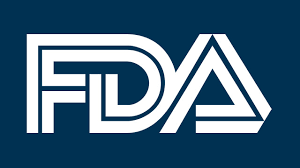The International Quality and Productivity Center released its 2016 Pharmaceutical Serialization & Traceability report [PDF] aimed to assess the current serialization compliance readiness and the main challenges the pharmaceutical industry has yet to overcome, as seen by pharma and biotech professionals. Small to medium (SME) and large pharma and biotech manufacturers, distributors, logistic service providers, technology providers, hospitals, and training institutes took part in the survey.
Approaches to Planning
Companies adopt one of the four most common strategies to reach complete serialization:
- 69% – Proactive deployment of global track and trace programs that would accommodate regulatory requirements for all relevant countries, future-proofing the system against compliance updates. Such companies rely on the efficient implementation ahead of time to preserve their market share, gain competitive advantage and profit from serialization through added supply chain visibility.
- Localized, incremental deployment approach sees companies deploy their track and trace efforts by country due to resource limitations and/or strategic preferences that focus on localized decision making.
- Many small and medium pharma and biotech manufacturers and virtual entities are just getting started to understand and/or plan for the regulatory compliance and related business requirements. About 24% of respondents are at the initial stages of their serialization projects, where companies outline the required infrastructure, evaluate partners and CMOs. Some manufacturers in this category intent to outsource their serialization efforts.
- Finally, the 6.3% minority of respondents report their companies have not started a formal serialization compliance program at all, yet. These companies plan to outsource the entirety of their serialization decision making. Some companies in this group believe the enforcement of serialization regulations will be delayed.
Serialization Implementation Progress
- 25.7% of respondents said their companies had started serialization rollout across multiple sites globally.
- 21.6% said their companies were currently looking for solution providers.
- 20.3% replied their companies were in the early stages of planning for serialization.
- 13.5% said their companies had started the pilot rollout in one site.
- 13.5% of respondents said their companies have fully implemented serialization.
- 5.4% have not started thinking about it, yet.
The late adopters, says the report, face a daunting amount of complex tasks they need to deliver in a short time, with no time for identifying or troubleshooting issues before the deadlines. A total of 47.3% of respondents has not deployed a pilot project, yet.
Challenging Regions
Asia is seen as one of the most challenging regions for planning the serialization strategies. Europe and the U.S. are perceived as the regions with harmonized regulations. Overall, the number of regulations in different countries presents a major challenge. There are over forty regulations in different countries with varying deadlines from as early as 2017 to deadlines not set, yet. These local regulations are different in complexity and detail, and grasping it all requires significant resources.
Pressing Deadlines
The challenge for the EU and US regions is the highly pressured deadlines, which constitute one of the major roadblocks to serialization compliance. As November 2017 approaches, and the DSCSA requires that all manufacturers implement product serialization, many companies report being late.
11.8% report full readiness, 4.4% need less than six months, 20.6% need 6-12 months more to reach full serialization.
Approximately 40% of respondents need 18-24 months or longer to implement serialization fully, which means the majority of them will likely be late by DSCSA serialization deadline in November 2017.
The EU Falsified Medicines Directive (FMD) is perceived as an arduous process difficult to implement, requiring large, invasive and expensive packaging lines re-engineering. The EU FMD deadline is set for February 2019, and 60% of respondents believe they have just enough time for proper testing of serialization. 12% said the time until 2019 is insufficient.
Implementation Status
33.3% of respondents don’t know how many packaging lines they will need to upgrade in response to serialization. 35.9% will need to upgrade less than 10 packaging lines, 28% – 10-99 lines.
Early adopters add serialization capabilities to most of their lines, sometimes consolidating lines with similar requirements to save on the upgrades in the future as new location-specific regulations emerge over time. Early adopters see significant benefits of serialization beyond compliance. However, the SMEs trail behind in upgrading their packaging lines, and the key reasons are:
- changing regulations in some countries
- no clear guidance on aggregation & grandfathering
- industry standards set by industry leaders, and not the governments
- hopes the deadlines will be delayed
- the deficit of resources
The report concludes most global health agencies responsible for enforcement of serialization regulations might have to delay deadlines eventually, as the industry is far from being ready.
Major Roadblocks to Serialization
Compliance is a top concern with regards to the implementation of serialization efforts, as regulations keep changing continuously in various countries. Compliance and integration with third parties such as CMOs, 3PLs and CFAs is another resource-hungry roadblock alongside the cost increase stemming from multi-region compliance efforts.
Optimal use of existing equipment and technologies (41.7%) and integration with legacy systems (35.4%) are among top challenges companies see in their serialization efforts. 10.4% report having issues with cross-site coordination for the serial generation for similar product lines; 6.3% with the creation of unique serialization codes for individual products during production, and 6.3% listed high-speed printing and verification of codes.
Cost concerns revolve around training and associated downtime, and the challenge of fully understanding the serialization costs and potential ROI beyond compliance.
Planning and deadlines are among the main challenges, with some respondents noting the difficulty of implementing track and trace and serialization simultaneously, choosing reliable partners, and adhering to requirements in time. Many SMEs fear that CMOs will not reach serialization compliance in time, which may have serious consequences.
About TrackTraceRx Suite
Other solutions on the market today are totally fragmented by only providing one piece of the puzzle. Pharmaceutical companies today are stuck subscribing to multiple services, accessing different companies for support and paying thousands of dollars to integrate different systems. The TrackTraceRx Suite is a game changer by combining the TrackTraceRx Traceability Solution, a ERP, and a Commerce Platform completely integrated out of the box. This eliminates having to deal with multiple support, feature services and integration costs.




